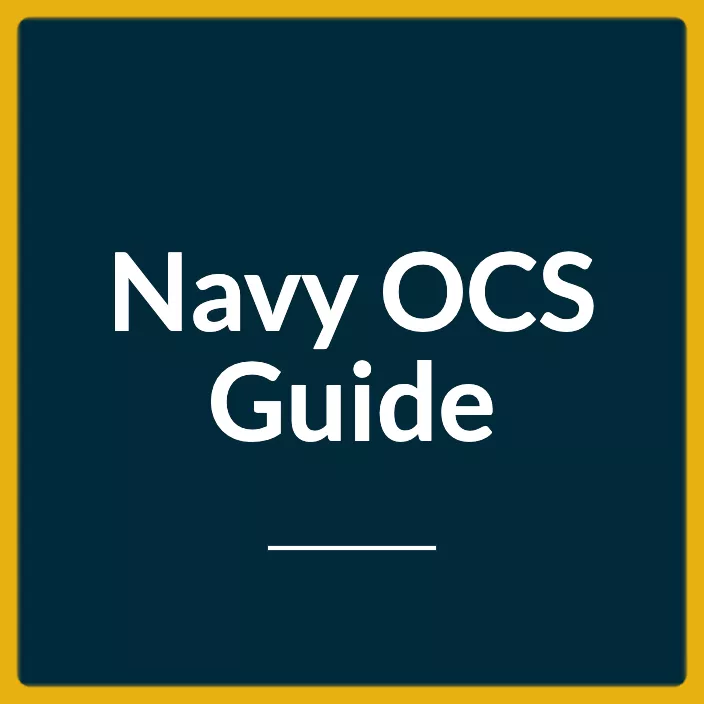Last Updated on October 14, 2024
This guide provides helpful information for those looking to become a Strategic Sealift Officer during Fiscal Year 2025.
What is a Strategic Sealift Officer?
Strategic Sealift Officers (SSO) are commissioned officers in the United States Navy Reserve designated to provide strategic sealift during times of national defense or disaster.
Strategic Sealift Officer Program (SSOP) offers emergency crewing and shore-side assistance for Military Sealift Command’s Surge Sealift Fleet and the Ready Reserve Force during times of national defense or emergency.

“It is the policy of the United States that merchant marine vessels of the United States should be operated by highly trained and efficient citizens of the United States and that the United States Navy and the merchant marine of the United States should work closely together to promote the maximum integration of the total seapower forces of the United States.”
(46 USC 511)
History
On June 10, 2011, the Deputy Chief of Naval Operations for Fleet Readiness and Logistics gave approval for the Merchant Marine Naval Reserve Program to become the SSOP.
The U.S. Navy grew out of the American Merchant Marine. During the American Revolution, almost every Naval Officer and seafarer was an experienced Merchant Mariner.
Most of the Navy’s first fighting ships were merchant ships that had guns added to them.
In the early days of the Navy, officers and midshipmen were told to sail on merchant ships to gain more seagoing experience and get better at sailing.
Before World War II, the most important source of people for the U.S. Navy was officers who had been trained in the Merchant Marine.
The Merchant Marine Act of 1936 was passed so that the country would have a strong Merchant Marine that could help the Navy and military in times of war or other national emergencies.
Before the war started, qualified Merchant Marine officers joined the Naval Reserve and did their best to protect our country.
Crucial Link
At the end of World War II, the U.S. Navy had a lot more ships than it does now. One of its principal jobs, protecting the sea lanes that are important to the country in times of war, has not changed.
Since the 1980s, Strategic Sealift has been given as an extra job to the Navy. To do this mission with fewer ships, the Navy is working with the Merchant Marine in a closer way than ever before.
MARAD and Military Sealift Command have set up a program of government-owned ships with civilian crews to carry out this strategic Sealift Mission over the past few years.
The Strategic Sealift Officer Program builds and strengthens the relationship between our two sea services.
Officers in the program are an important link between merchant ships and naval ships when they work together.

How to Become a Strategic Sealift Officer
To become a Strategic Sealift Officer, applicants must be American citizens, between 21 to 42 years of age, who graduated from the U.S. Merchant Marine Academy or any of the state maritime academies. Applicants must also have the necessary licenses and credentials to perform this job.
The basic eligibility requirements listed below are current as of June 2019, per the Navy Personnel Command. No updates have been issued so far.
Basic Eligibility Requirements
| Citizenship | Applicants must be United States citizens. |
| Gender | Open to both men and women. |
| Age | At the time of commissioning, applicants must be at least 21 years old and less than 42 years old. Prior service will be credited on a year-for-year basis up to age 52. |
| Education | Graduates of the United States Merchant Marine Academy in Kings Point, New York, or one of the State Maritime Academies in New York, Maine, Texas, Massachusetts, or California, the regional Great Lakes Maritime Academy, any accredited industrial school, or a bachelor’s degree in science from an accredited institution. |
| Physical | In accordance with Chapter 15 of the Manual of the Medical Department. |
| Duty Preference | Must be actively sailing in the maritime sector or engaged in a capacity that the SSO flag sponsor or SSO deputy flag sponsor deems mission-useful. |
| Marital Status | No restrictions. |
| Licensure/Certification | Possess a valid U.S. Coast Guard unlimited officer license at the minimum level of Second Mate or Second Assistant Engineer, as well as current Standards of Training, Certification, and Watchkeeping (STCW10) certifications. Licenses renewed for continuity or for service on domestic, coastwise, or restricted tonnages or horsepower are ineligible. |
Upon Selection
Within one year of commissioning, selected candidates must complete the 2-week SSO Post-Commissioning Indoctrination.
Candidates will be commissioned as Ensigns in the U.S. Navy’s Restricted Line, designator 1665.
Service Obligation
- Selected individuals will be required to serve in the individual ready reserve for eight years.
- Selected candidates must complete the program participation standards stated in OPNAVINST 1534.1E, Strategic Sealift Officer Program.
- Selected individuals must have the ability to gain and maintain a security clearance.
- Candidates must have a valid USCG license and STCW10 certifications.
- Selected individuals must continue to be eligible for mobilization and global assignment.
- Selectees will be immediately deployed to the Strategic Sealift Ready Reserve Group (SSRG IRR UIC 2525M). After qualifying for and receiving the SSO warfare insignia and AQD, SSOs may request to join the Selected Reserve as a drilling member.
More Information
If you are interested in the Navy Strategic Sealift Officer program, the next logical step is to contact your local Navy Reserve Officer recruiter.
They will guide you through the qualification and application process.
You may also be interested in reading this guide about the Navy Reserve Officer program.
Hope you find this helpful to your career planning.

